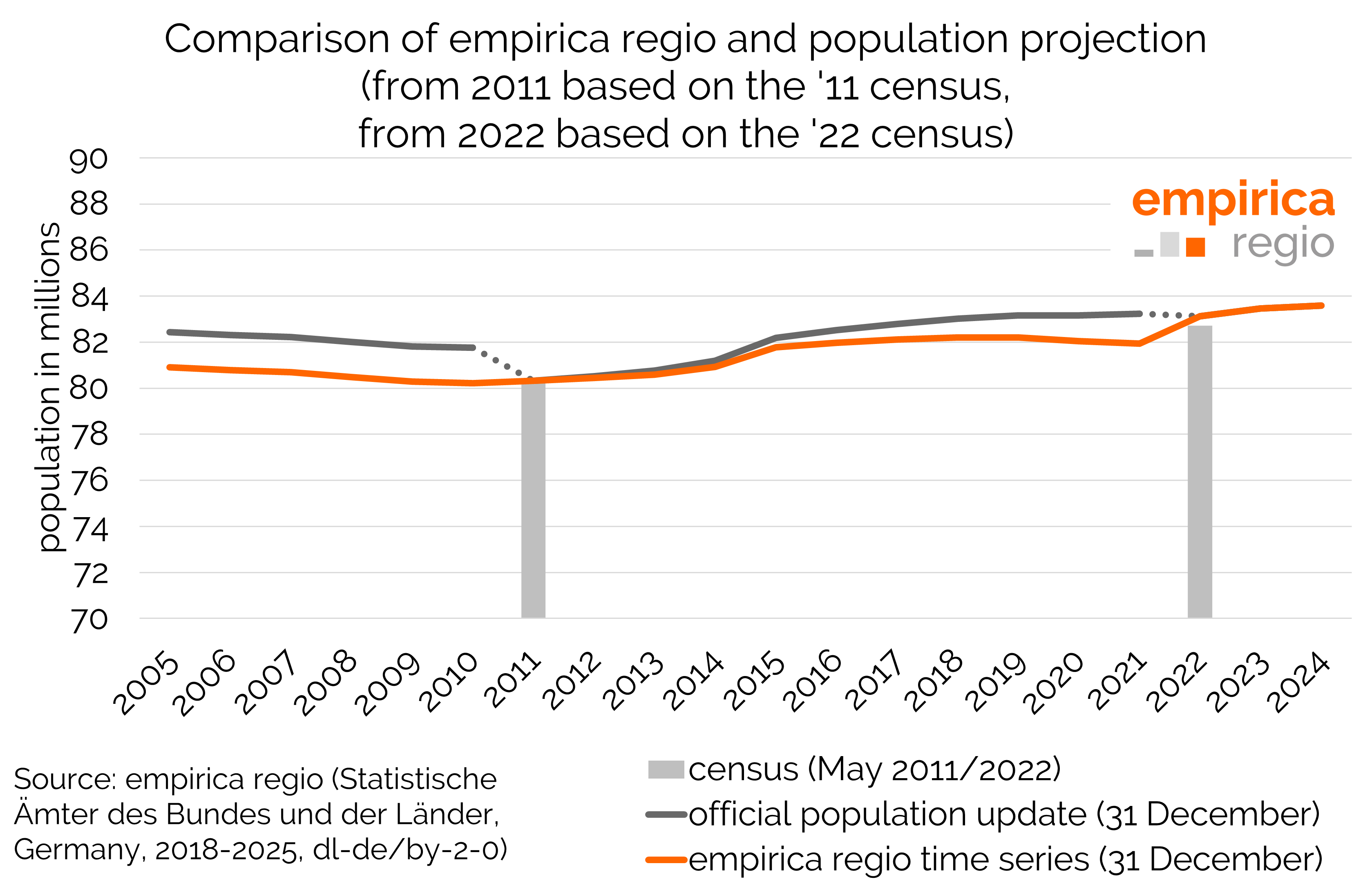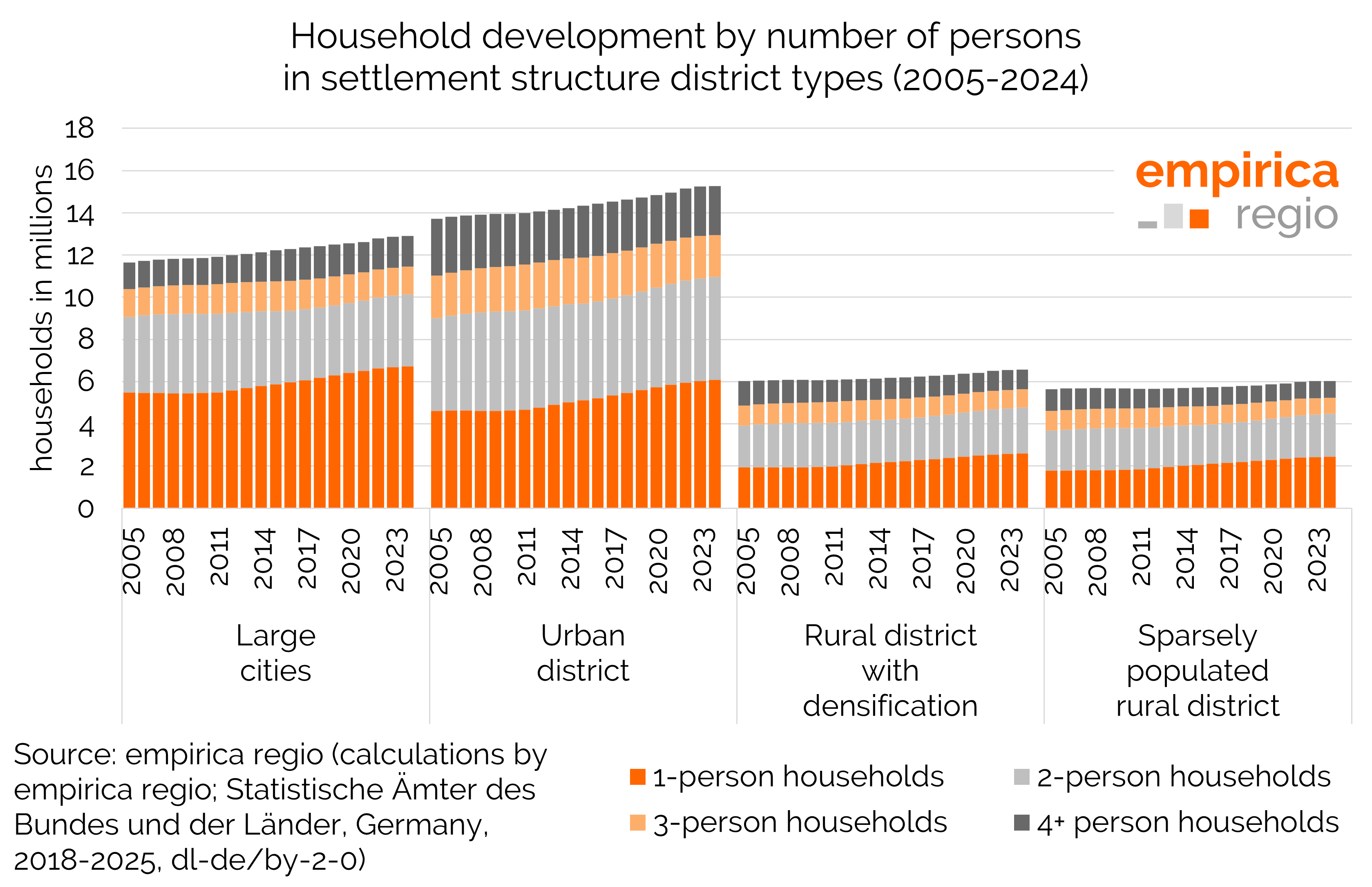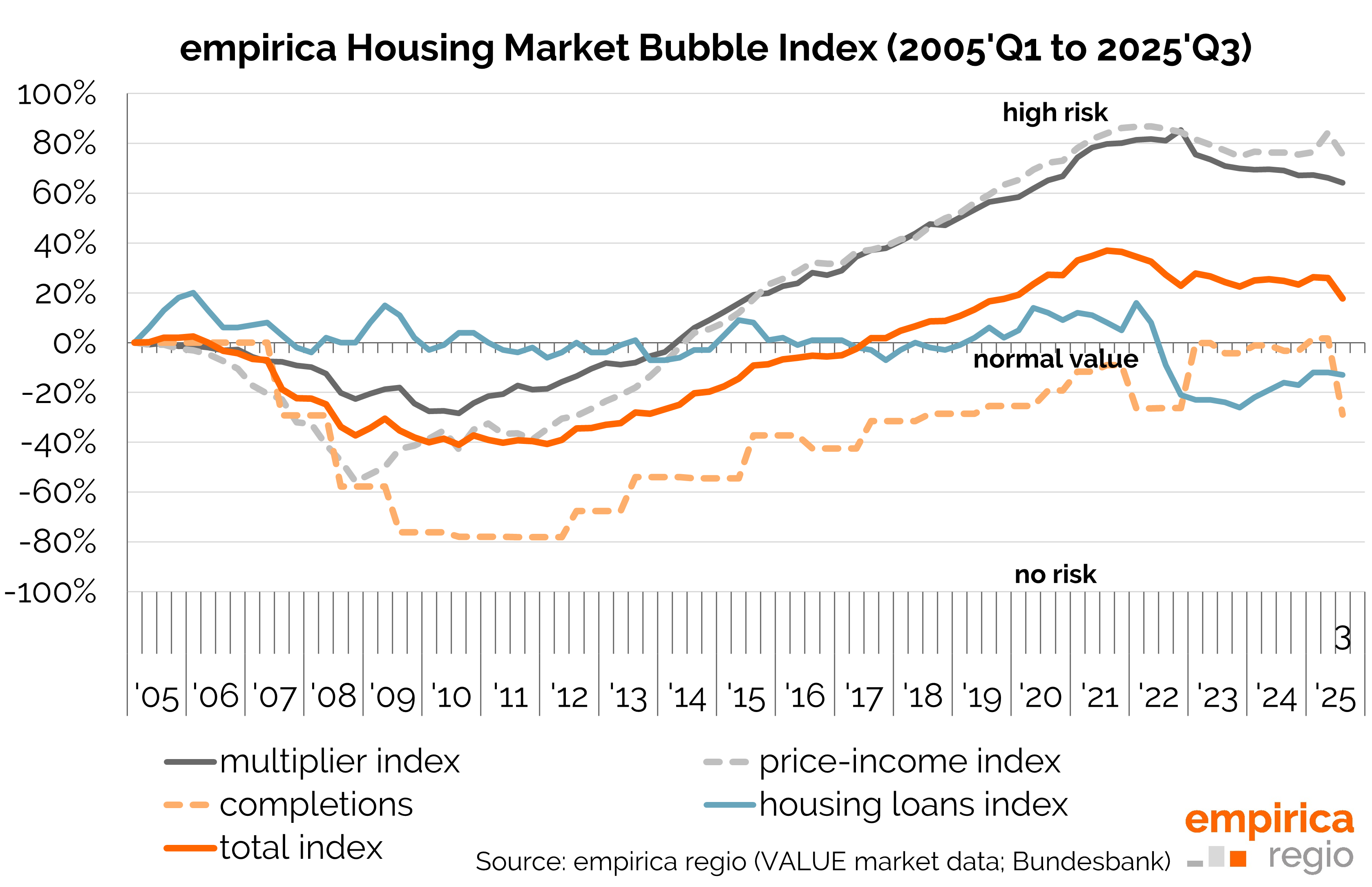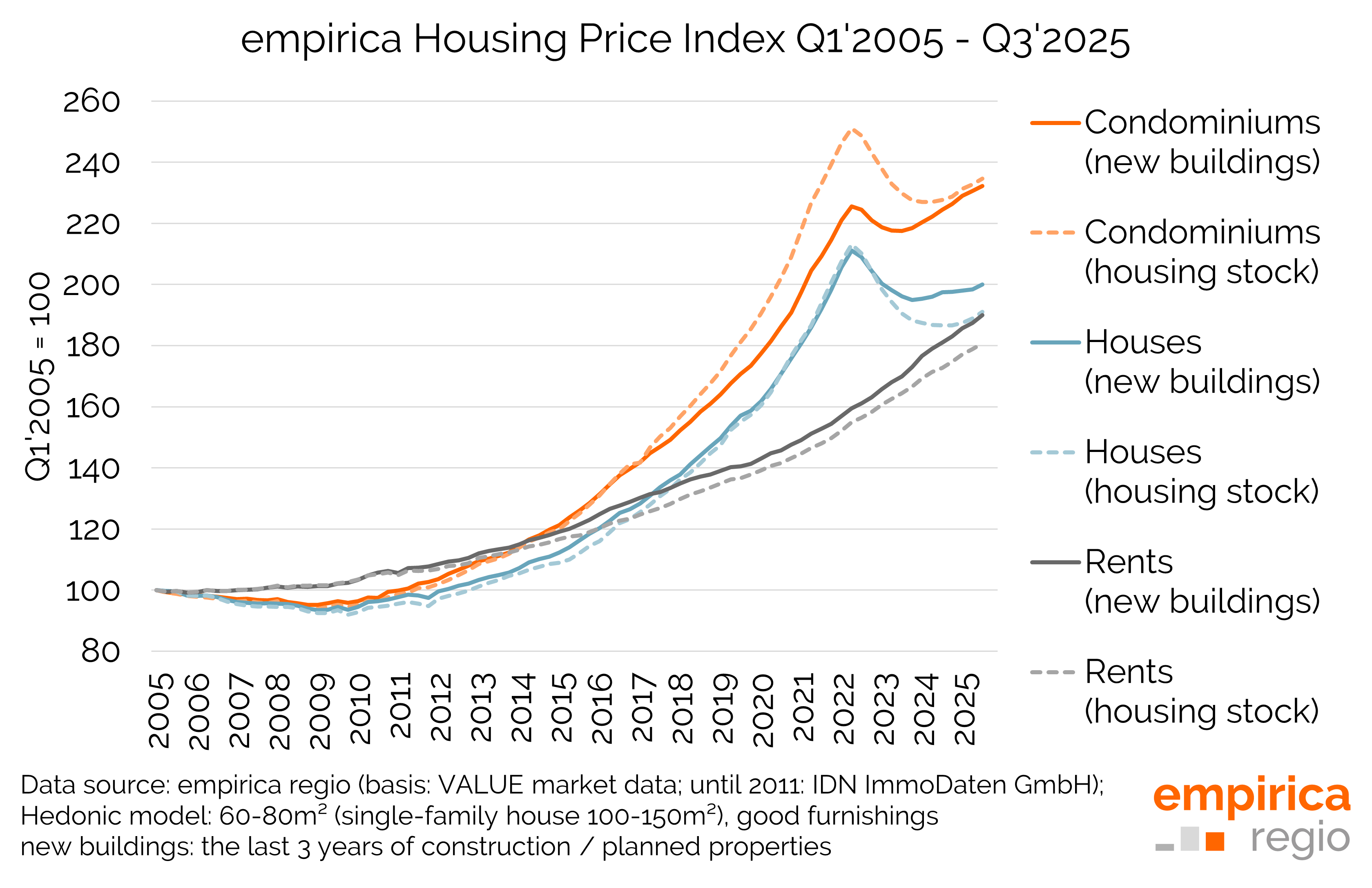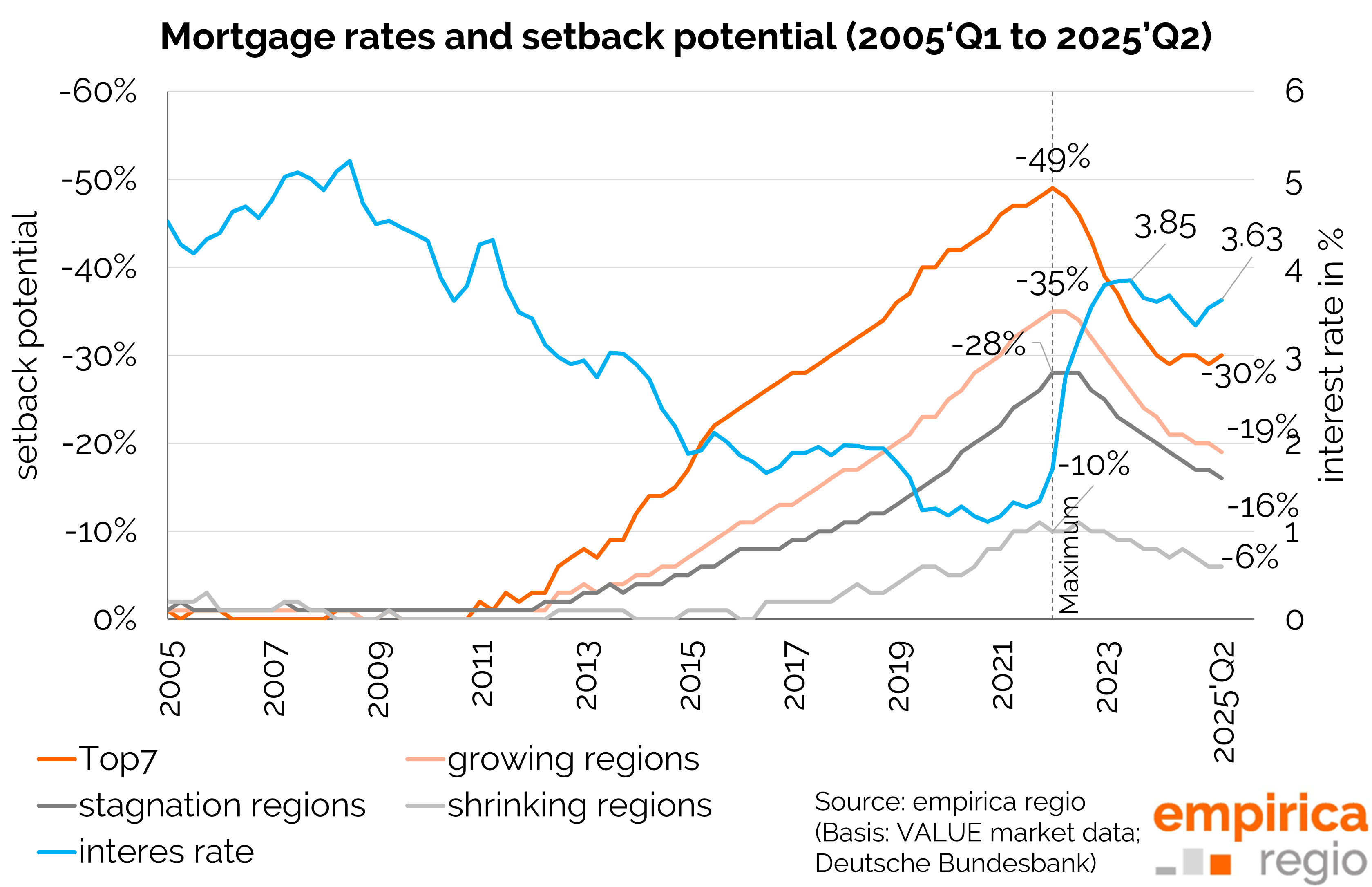Major update of demographic data
The longer ago the last census was conducted, the greater the differences between the projected and actual population figures. The 2022 census has created an important adjustment here: the federal and state statistical offices have recalibrated the population projection and we have adjusted our database accordingly. From now on, you will be working with a new basis for all demographic analyses.
Population Figures
In mid-August, we updated all population statistics from 2012 onwards in our database. Previously, population projections were based on the 2011 census and ended in 2023 on this basis. As the census for summer 2022 showed a population that was around 1.4 million lower than the old population projection, an adjustment was necessary. As in 2011, the change has resulted in a break in the time series in the official projection. However, the empirical time series from empirica regio show population development without these breaks.
The Federal Statistical Office has published retroactively calculated time series for the years 2012–2021. These take into account the underestimation of emigration abroad and other sources of error since the 2011 census in previous updates. On this basis, we have revised our data and made adjustments to the time series down to the municipal level. As a result, the population statistics have been fundamentally adjusted and are now based on an updated level since 2022.
empirica Household Model
Since the beginning of September, our customers have had access to updated household figures from the empirica household model. The development of households, particularly when differentiated by number of household members or household types (e.g. couples without children, couples with children), provides an important basis for analysing demand in the housing market. With the revision of the data based on the results of the 2011 and 2022 censuses, demographic developments can now be better represented and updated.
Summary
The 2022 census data has closed an important gap and recalibrated the basis for official population updates. This adjustment is more than a statistical correction; it provides a new, reliable database that is essential for strategic decisions in the real estate industry.
By revising our population and household data based on the census results retroactively to 2012, you can now access more accurate demographic analyses.
These updated figures, which also provide a detailed picture of household development, enable you to forecast future demand trends in the housing market even more accurately and make your investment decisions on a sound basis. The quality of the data is therefore the decisive factor for successful and forward-looking positioning in a dynamic market.

